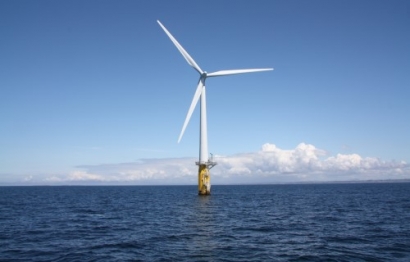
Wind is currently in a good position within the market. As of right now, offshore wind is cheaper than most energy forms, with onshore wind being the cheapest renewable available. However, fossil fuels like oil and gas are still leading energy sources throughout the States.
On top of this competition, offshore wind, as it is now, needs more momentum to eventually overtake fossil fuels. The turbines themselves are where to start. The blades and each individual mechanism inside the turbine can run smoothly, but will eventually need some form of maintenance.
During harsh weather or sea conditions, taking a boat to the site is dangerous and impractical. Waiting out the conditions will then lead to production delays. If there is an error, residents and businesses may be stuck, without power, waiting for a repair.
Fossil fuels are cheap and, if the power goes out, a fossil-fuel-powered generator is ready to help. Wind power must evolve to compete. Fortunately, things are looking up for offshore wind. 2019 was the best year for offshore wind so far, with 6.1 gigawatts installed globally.
To continue the growth of wind power, smart technology is already available to install and use. A smart grid must start with the sites themselves and provide solutions for production and maintenance inefficiencies.
For offshore wind, the most pressing issue is to keep the turbines producing energy at all times. An analytics system helps workers stay in the operational centers to monitor the site’s performance. This system tracks how each turbine operates. Internet of Things (IoT) sensors report when a function or mechanism is showing signs of abnormal behavior.
This alert lets workers know that it’s time to replace or repair some of the turbine’s equipment. Instead of waiting for it to stop working, they can proactively keep the offshore site up and running, providing power to everyone on its grid.
These analytics systems also gather data based on power efficiency. With intuitive sensors and software, they automatically take weather patterns and predictions into account. Then, the turbines know when to conserve or store energy in periods of low and high winds.
After implementing smart grid technology within the offshore wind sites, the industry should turn its focus to collaboration. Though wind energy is in competition with fossil fuels, it shouldn’t have to compete with other renewable and sustainable energy options.
Working with local and national utility companies, offshore wind managers can pool resources and knowledge. Most notably, they can integrate battery power to provide smart grid energy storage capabilities. This form of power helps optimize energy distribution along the grid. Using the same smart tech as the turbines, workers can predict weather patterns and prepare for outages.
The grid can ultimately keep residents and businesses from losing power, which would put offshore wind at a clear advantage over fossil fuels. Together, a smart offshore wind system can work towards producing 1,000 megawatts of electricity for the grid.
New Jersey is one state that’s already working towards this level of progress. Recently, Governor Murphy announced a $250 million investment into new offshore wind projects and manufacturing that will serve the state and the wind industry throughout the States. With more movement like this, offshore wind can become the norm.
Smart grid technology is the solution for putting offshore wind development on the most efficient path possible. By doing so, the environment, public health and the economy benefit. Moving away from fossil fuels and their pollution, these solutions will no longer take such a hefty toll on human health and the world. Additionally, smart offshore wind adds new jobs to the market. These three areas prosper — all they need is a boost from smart grid technology.
Author bio:
Jane Marsh is an environmental and energy writer. She is also the founder and editor-in-chief of Environment.co.

